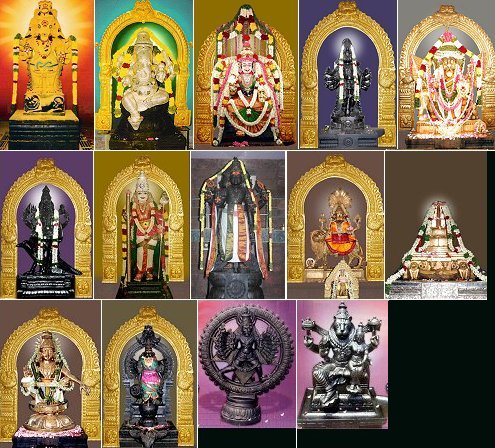

 Ohm Devi Thirukkadaiyur Abhirami Ammane Potri!. Ohm Devi Annai Vishnu Durgai Ammane Potri!. Ohm Devi Melmalayanur Angala Ammane Potri!. Ohm Devi Siruvachur Madura Kali Ammane Potri!. Ohm Devi Karaikudi Koppudai Ammane Potri!. Ohm Devi Vijayawada Kanaka Durgai Ammane Potri!. Ohm Devi Kollur Mookambigai Ammane Potri!. Ohm Devi Mangadu Kamatchi Ammane Potri!. Ohm Devi Annai Kanniga Paqrameswari Ammane Potri!. Ohm Devi Chidambaram Kali Ammane Potri!. Ohm Devi Madurai Meenakshi Ammane Potri!. After Abishekam, Vasthradharan is done and garlanded with flowers.Īrchana is performed with Golden Arali flower chanting Asthothras (108 Namavalis) and there after Camphor Arthi is shown to the diety.ĭeva prasanam : On Sundays, Tuesdays, Fridays, Amavasya days and Pournami days devotees are permitted to pick a sheet of paper from amongst 108 sheets to know the divine directions of the Araikasu Amman with regard to their needs.Ĭurrency, Fruites & Vegetables decorationĪll Amavasya and Pournami days Sundays Tuesdays and Fridays. The long history of the Thondaimans rule came to an end.Immediately after opening the shrines, abishekams are performed to the Araikasu Amman with Milk, Tender Cocunut water, Honey, curd, and sandal and other perfumes. After Indian independence in 1947, the Pudukkottai Princely State was amalgamated with Indian Union on and became a division in Tiruchirappalli district. Raja Rajagopala Thondaiman (1928 -1948) the last and ninth in the line of Thondaiman rulers, was selected by the British Government and was crowned when he was six years old. Tipu Sultan had sought to leverage the power of the French against his British adversaries, and Pudukkotai, in common with its neighbours such as Thanjavur and Travancore, found it expedient to ally with the British. This was arguably unavoidable, since the Thondaimans were much menaced in that period by a resurgent Mysore ruled by Hyder Ali and Tipu Sultan. Pudukkotai finally came under formal British protection. He helped the British Government against Tipu Sultan. Thondaiman captured Kilanilai and Aranthangi. After some time, when Hyder Ali’s army tried to enter into Pudukkottai, the Thondaiman’s army successfully defeated them and drove Hyder’s army away. He was also loyal towards the British Government. The next ruler Raja Vijaya Reghunatha Raya Thondaiman he helped Arcot Nawab against Hyder Ali the ruler of Mysore. Thondaiman conquered the west of Thirukkattupalli. Then there was a direct clash between Thondaimans of Pudukottai and the Nayaks rulers of Tanjore.
Ohm Devi Thirukkadaiyur Abhirami Ammane Potri!. Ohm Devi Annai Vishnu Durgai Ammane Potri!. Ohm Devi Melmalayanur Angala Ammane Potri!. Ohm Devi Siruvachur Madura Kali Ammane Potri!. Ohm Devi Karaikudi Koppudai Ammane Potri!. Ohm Devi Vijayawada Kanaka Durgai Ammane Potri!. Ohm Devi Kollur Mookambigai Ammane Potri!. Ohm Devi Mangadu Kamatchi Ammane Potri!. Ohm Devi Annai Kanniga Paqrameswari Ammane Potri!. Ohm Devi Chidambaram Kali Ammane Potri!. Ohm Devi Madurai Meenakshi Ammane Potri!. After Abishekam, Vasthradharan is done and garlanded with flowers.Īrchana is performed with Golden Arali flower chanting Asthothras (108 Namavalis) and there after Camphor Arthi is shown to the diety.ĭeva prasanam : On Sundays, Tuesdays, Fridays, Amavasya days and Pournami days devotees are permitted to pick a sheet of paper from amongst 108 sheets to know the divine directions of the Araikasu Amman with regard to their needs.Ĭurrency, Fruites & Vegetables decorationĪll Amavasya and Pournami days Sundays Tuesdays and Fridays. The long history of the Thondaimans rule came to an end.Immediately after opening the shrines, abishekams are performed to the Araikasu Amman with Milk, Tender Cocunut water, Honey, curd, and sandal and other perfumes. After Indian independence in 1947, the Pudukkottai Princely State was amalgamated with Indian Union on and became a division in Tiruchirappalli district. Raja Rajagopala Thondaiman (1928 -1948) the last and ninth in the line of Thondaiman rulers, was selected by the British Government and was crowned when he was six years old. Tipu Sultan had sought to leverage the power of the French against his British adversaries, and Pudukkotai, in common with its neighbours such as Thanjavur and Travancore, found it expedient to ally with the British. This was arguably unavoidable, since the Thondaimans were much menaced in that period by a resurgent Mysore ruled by Hyder Ali and Tipu Sultan. Pudukkotai finally came under formal British protection. He helped the British Government against Tipu Sultan. Thondaiman captured Kilanilai and Aranthangi. After some time, when Hyder Ali’s army tried to enter into Pudukkottai, the Thondaiman’s army successfully defeated them and drove Hyder’s army away. He was also loyal towards the British Government. The next ruler Raja Vijaya Reghunatha Raya Thondaiman he helped Arcot Nawab against Hyder Ali the ruler of Mysore. Thondaiman conquered the west of Thirukkattupalli. Then there was a direct clash between Thondaimans of Pudukottai and the Nayaks rulers of Tanjore. 
After the death of Raghunatha Kilavan Setupati he become ruler of Pudukottai.Īfter becoming the ruler of Pudukottai, Raghunatha Thondaiman fought against the Nayaks of Tanjore in support of the Nayaks of Madurai and conquered Thirukkattupalli a very important place.

In later centuries, the Thondaiman rulers, while nominally feudatories of the Ramnad state, often pursued an independent foreign policy, a trend common in all parts of India at that time. In appreciation of Raghunatha Tondaman's services, Raghunatha Kilavan Setupati has given Pudukkottai as an honour for his services. Raghunatha Thondaiman was earlier ruling Thirumayam. Raghunatha Kilavan Setupati of Ramnad (1673–1708 A.D.) married Kathali Nachiar the sister of Thondaiman, he appointed his brother in law Raghunatha Thondaiman as a chief of the district of Pudukottai. The princely state of Pudkottai was created by Raghunatha Thondaiman. Thondaiman King in his Durbar, Pudukkottai, 1858. The district became a part of the Vijayanagara Empire in the 14th century. Over the centuries, the district was ruled by a succession of South Indian dynasties which included the Cholas, Pallavas and Hoysalas. The present-day district of Pudukkottai was part of the Pandya kingdom. Coin of the Roman emperor Augustus found at the Pudukottai hoard.








 0 kommentar(er)
0 kommentar(er)
